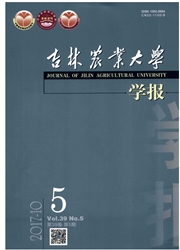

 中文摘要:
中文摘要:
从T-DNA插入突变体中筛选到一个类病斑突变体AZT91,主要表现为生长缓慢、植株矮小、叶片出现条状褐斑,最后死亡。对突变体及其后代分离群体进行潮霉素抗性检测,证明该突变体是由T-DNA插入突变引起的,突变性状与T-DNA共分离。PCR和TAIL-PCR分析进一步证明了上述的观点。利用TAIL-PCR扩增了左边界侧翼序列,通过分析,初步推测该突变体可能是由于T-DNA插入后激活了单加氧酶基因的过量表达,破坏正常代谢途径,导致突变体死亡。该材料可用于水稻代谢调控机理的研究。
 英文摘要:
英文摘要:
A disease lesion mimic mutant named AZT91 was screened from T-DNA insertion mutant of rice. It mainly displayed to grow slowly, dwarfism, dark brown spot on leaves and die at last. The resistance detection of HYG was used to screen the mutant and the progeny segregating population. The results demonstrated that it was caused by T-DNA insertion and this mutant phenotype was cosegregated with the T-DNA. We confirmed that the mutant phenotype was caused by T-DNA insertion by PCR and TAIL- PCR, and isolated the flanking sequence of AZT91 by TAIL- PCR. It can initially presume that the death of the mutant was caused by the following: the insertion active overexpression of the monooxygease and destroy the normal metabolism way. This mutant can be used to study the mechanisms of rice metabolism control.
 同期刊论文项目
同期刊论文项目
 同项目期刊论文
同项目期刊论文
 期刊信息
期刊信息
